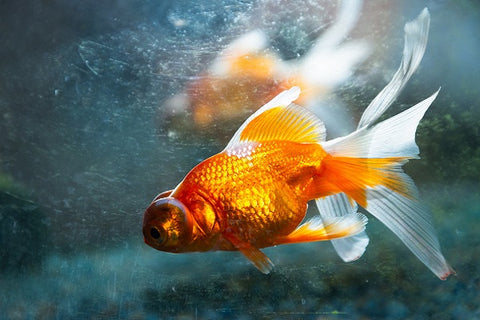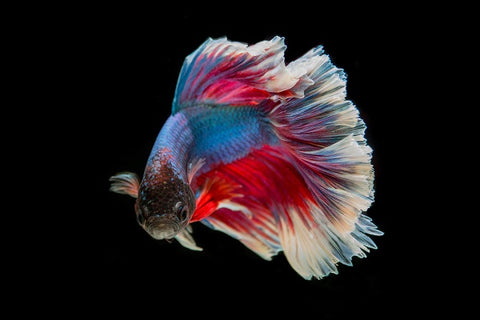Whatever the type of fish you keep in your aquarium. If they have a small tendency to eat meat, then they will surely jump over the bloodworms.
You will find them in most pet stores. They often come in the form of small red larvae. Often, most aquarists find them as a great deal to overcome the protein deficiency and energy booster for their carnivorous aqua pets.
But there are several considerations that you must consider about these bloodworms to supply them into your fish tank. You also know which one is most suitable for your aqua pets.
In this article, you will find all of these things besides a list of the fish that love to jump over the bloodworms.
Types of bloodworms
There are three main types of bloodworms, classified on the storage base.
1. Fresh/Live bloodworms
Fresh or live bloodworms are the natural inhabitants of freshwater ponds. They are the first choice of many aquarists because their nutritional value is higher than all remaining types, i.e., frozen bloodworms and frozen-dried bloodworms.
Fish will feel at home when they see live bloodworms. Whatever the benefits, they also come along with some hard things, i.e., the risk of bacterial diseases. Therefore, carefully select them before supplying them to aquariums.
2. Frozen bloodworms
It’s very convenient to feed frozen bloodworms to your fish. Besides the ease of handling, they are free of many bacterial diseases that can break up with live bloodworms. You can even stock them for later use in your freezer for 6 months.

3. Freeze-dried bloodworms
These are the other most common bloodworm type among aquarists.
It’s easy to feed them to your fish. There is much more control in the case of these bloodworms as they are graded in multiple qualities.
Ease comes with some sacrifices. They are the least nutritional for your fish. You have to soak them in water for a while before supplying them to your fish tank.

Points to consider for bloodworms supply
There are some worth considering points that you have to consider before supplying them to a fish tank.
- Never make it a staple food.
- Overfeeding or often feeding both leads to numerous problems both for fish and tank.
- In case of frozen and freeze-dried, you’ve to soak them in water.
5 fish that eat bloodworms
1. Goldfish

Bloodworms are a delicious treat for goldfish. They feast over both frozen and fresh bloodworms. But it is necessary to feed them as a feast, not as a staple.
The winter is usually hard for the goldfish because they reduce their diet up to extreme limits. If you supply them with bloodworms, they can perform very well even in winter as they are rich in protein.
Moreover, bloodworms prove helpful for those goldfish, which are fussy eaters. No goldfish nose up to see the bloodworms.
In their natural habitat, there are a lot of meaty insects as a feast during the mating season. If you supply bloodworms when you want a new goldfish generation, then you are going to replicate their natural environment. In such an environment, they will successfully reproduce their next generation.
Although bloodworms are a good feast, goldfish love to jump over them. But the downside of excessive bloodworm supply is also there. Like they are rich in protein but missing too many essential nutrients.
Overfeeding causes constipation and swim bladder disease. It may also be responsible for disease hikes in the tank. So supply them but with moderation.
2. Swordtails

Swordtails fish are omnivores in nature. Therefore, you can feed them over bloodworms. When they come over with food, they don’t act choosy. They will eat what you feed. In their natural habitat, they feast on bloodworms to mosquito larvae.
It’s essential to supply them with a balanced diet, i.e., include both leafy and rich in protein sources.
In captivity, they will eat both frozen-dried and fresh bloodworms. But it’s better to feast them over fresh bloodworms because they are rich in nutrients. In nature, they prey on insects, worms, and mosquito larvae.
Therefore, they jump over the bloodworms when you add them to your fish tank. So, don’t be surprised to look at such a scene. Feed them one within three days.
3. Betta fish

Betta fish are another fish on this list that can eat bloodworms. But in fact, they love to consume them. They will eat whatever type you feed live, frozen, and freeze-dried bloodworms. They love to eat but don’t overdo it.
Feeding them with bloodworm will help bettas to maintain their natural color, which fades otherwise due to many reasons, i.e., stress, injury, and illness.
They are also rich in iron, which is essential for betta’s health. But feed them as a feast, not as a staple food. Bloodworms lack many essential elements, vitamins, minerals, and amino acids, which are required for breeding.
You have to maintain a proper bloodworm feeding calendar to see a happy beta fish in your fish tank. Otherwise, excess bloodworms lead them to multiple diseases, like constipation, swim bladder disease, and ammonia spike in the tank.
Feeding one or maximumly two bloodworms at a time is enough for each beta fish. There is a method that often speaks aloud for bloodworms supply.
Add such a number of bloodworms that can be consumed within two minutes. After two minutes leftover the remaining. Soak them in water, before supply in the tank. Supply once within a week is enough for beta’s health.
4. Guppy fish

Guppies can eat bloodworms, and frozen bloodworms are their loved one's food. They can eat whatever you feed because they are omnivores.
Guppies love to eat live bloodworms as they are rich in protein. Protein is the most desired nutrient for your fish as it’s helpful to keep your fish healthy and strong. You can understand the inclination toward bloodworms eating with the following statement.
Their fry can even eat the bloodworms. But it’s recommended to chop them into small pieces or buy small worms to supply them. It’s difficult for the fry to eat big size worms.
Keep in mind don’t overdo it as they are rich in protein. Overdose of bloodworms can leads to health issues.
5. Eels

They love to eat meat. Therefore, you can feed them over different types of bloodworms. But you have to keep in mind don’t overfeed your eels with bloodworms. It may cause a spike in diseases and ammonia in fish and aquariums.
Feed them as a treat, not as a daily nutritional diet. They are rich in protein but lack many essential nutritional elements.
Spiny eels are bottom dwellers. If there are some other bottom dwellers present in the tank, then make sure each one gets their fair share.
Eels also love to feast on multiple types of food, i.e., earthworms, krill, brine shrimp, and glass worms. If you supply the other types, then they have a variety of food consumed.
Conclusion
Bloodworms are rich in protein. Multiple types of bloodworms are available. If you are looking for a higher nutritional value, then fresh bloodworms are unmatchable. But if you looking for some ease then the freeze-dried bloodworms are exceptionally for you.
Goldfish, bettas, and swordtails are among the bloodworm's lovers. Keep in mind, don’t overfeed or make it a staple, they will cause problems in your fish. Use it as an occasional feast for your aquarium inhabitants.

